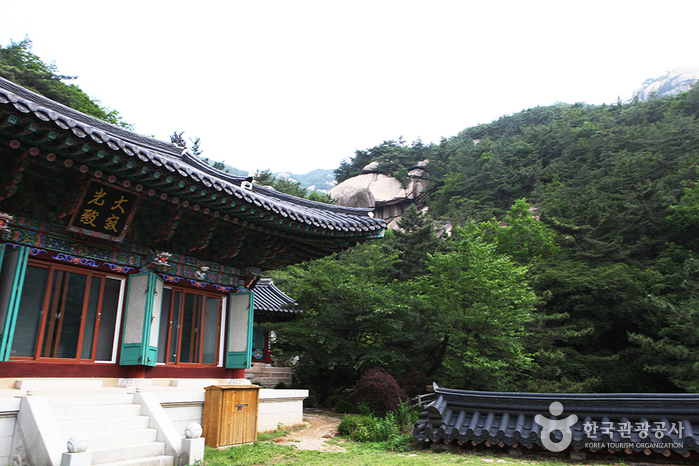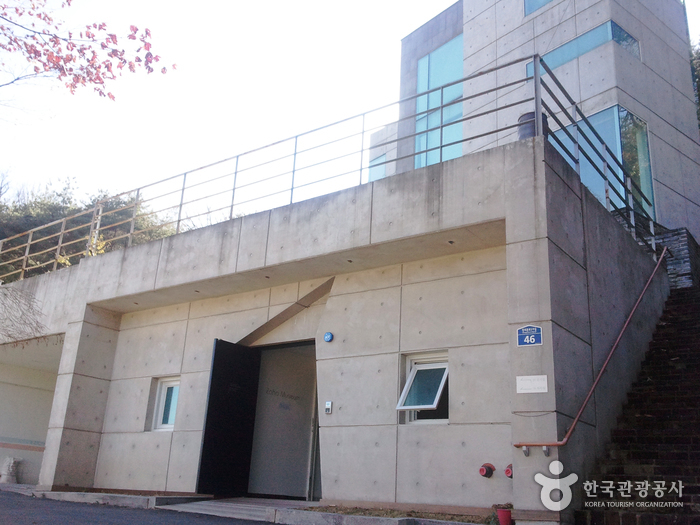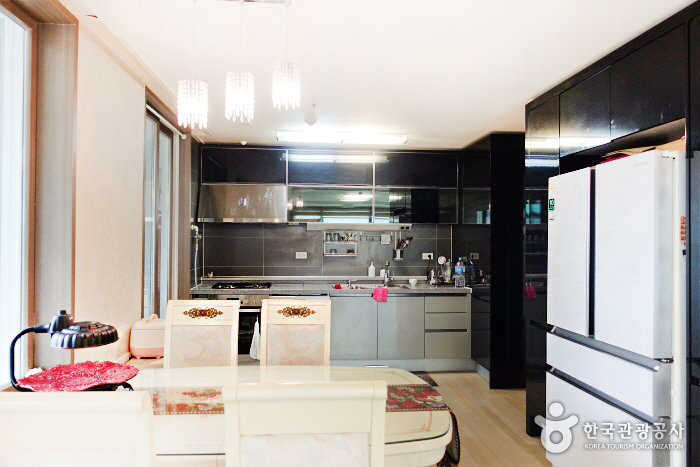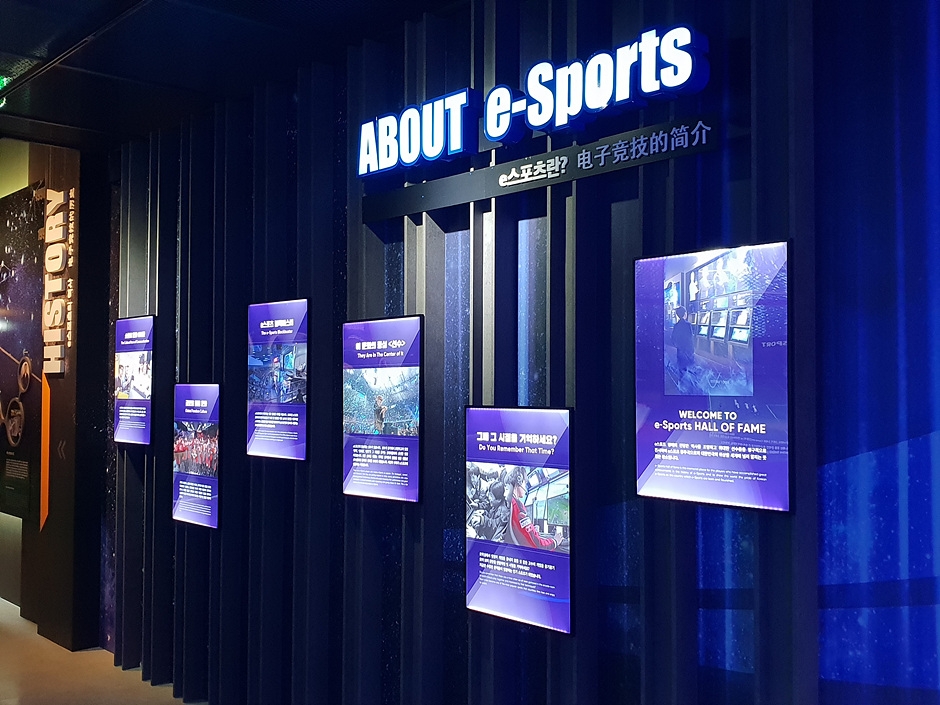Himart - Sangam World Cup Branch [Tax Refund Shop] (하이마트 상암월드컵점)
3.6Km 2024-04-18
295, World Cup buk-ro, Mapo-gu, Seoul
-
Seoul Geumseonsa Temple (금선사(서울))
3.7Km 2021-08-17
137, Bibong-gil, Jongno-gu, Seoul
+82-2-395-9911
Geumseonsa Temple is located within Bukhansan National Park, just behind Cheong Wa Da (The Blue House) and Gyeongbokgung Palace. The entrance to the temple is just off the hiking path to Bibong Peak.
After passing Banyajeon Hall, where Buddhist services are held, visitors will see a pine tree over 200 years old, and beyond that, a staircase with 108 steps leading up to Daejeokgwangjeon Hall in the temple's main area. To the right is Samseonggak House and Hongyegyo Bridge over the clear waters flowing down from the mountain.
Additional temple buildings include Mitajeon Hall and Yeonhwadang Hall, built in 2004 by Monk Beopan; and Jeokmukdang Hall, built using traditional construction techniques.
Chengha Korea Ginseng Co., Ltd.[Korea Quality] (청하고려인삼(주)[한국관광 품질인증])
3.7Km 2024-07-01
280 , Jahamun-ro, Jongno-gu, Seoul
+82-2-395-1688
Cheonghagoryeo Ginseng Co Ltd in Jongno-gu, Seoul, is a specialist Korean ginseng company aiming to promote the history, culture, and efficacy of Korean ginseng to foreign tourists. The headquarters building houses a ginseng museum, two stores, a bank and a cafe. There are staff who are fluent in foreign languages, to help visitors with reservations, museum guidance, product consultation, and sales. We operate a thorough follow-up support service to ensure customer satisfaction.
Cheongha Korean Ginseng [Tax Refund Shop] (청하고려인삼)
3.7Km 2024-04-22
280, Jahamun-ro, Jongno-gu, Seoul
-
The Oreum (디오름)
3.7Km 2024-02-21
136-10 Yongdu-ro 47beon-gil, Deogyang-gu, Goyang-si, Gyeonggi-do
The Oreum presents various spatial concepts on each floor, ranging from reed-themed to black or white-themed spaces. The café boasts dedicated sections for media art enthusiasts and a rooftop area ideal for photography sessions. Their standout offerings include the Truffle spänner, a delightful blend of creamy sweetness infused with truffle essence, and the Jeju matcha crumble, featuring smooth cream and savory crumbles. The aromatic americano crafted from Geisha coffee beans is also one of the patrons' favorites.
Zaha Museum (자하미술관)
3.8Km 2021-03-09
46, Changuimun-ro 5ga-gil, Jongno-gu, Seoul
+82-2-395-3222
Located in Buam-dong, Jongno-gu, Zaha Museum is the highest art gallery in Seoul. Reaching
the museum involves a bit of an uphill walk, but the breathtaking scenery that includes Bugaksan Mountain and Inwangsan Mountain makes it worth the effort.
Opened on March 1, 2008, the two-story museum exhibits experimental works of young artists. There are two exhibition halls and a small garden on the second floor with a great view of the mountains.
Gyeongui Line Forest Park (Yeontral Park) (경의선숲길(연트럴파크))
3.8Km 2023-08-11
133, Donggyo-ro 51-gil, Mapo-gu, Seoul
Gyeongui Line Forest Park is a linear city park located in Mapo-gu and is also called Yeontral Park. It includes Daeheung-dong, Yeonnam-dong, Saechanggogae Pass, Changjeon-dong, Sinsu-dong, and Wonhyo-ro, which were opened in this order. Gyeongui Line Forest Park is established atop the Gyeongui railroad line and the Gyeongui Line and Airport Railroad Express are constructed as a double track underground. Gyeongui Line Forest Park was designed to be incomplete on purpose to invite the citizens in completing the park. The area which could have been left empty and neglected has turned into a meaningful green park for the citizens by the citizens.
GLOBAL STAY (글로벌스테이)
3.8Km 2024-12-23
57-37 , Jingwan 2-ro, Eunpyeong-gu, Seoul
+82-2-383-7377
Global Stay is a B&B-style guest house in Jingwan-dong, Eunpyeong-gu, Seoul. The guest house has a terrace decorated according to season by the owner, who is trained in traditional Japanese table setting. A stylish breakfast and refreshments are provided, and the owner offers city orientation and Korean lessons for Japanese travelers.
e-Sports Hall of Fame (e스포츠 명예의 전당)
3.9Km 2024-10-14
31 Maebongsan-ro, Mapo-gu, Seoul
The e-Sports Hall of Fame is operated by the Ministry of Culture, Sports and Tourism and the Korea e-Sports Association to exhibit and honor the esports athletes who have made history for their amazing skills, making Korea synonymous with esports. Visitors can see the athletes' uniforms, gaming materials, trophies, and more, as well as try their hand at playing famous esports games firsthand.


![Chengha Korea Ginseng Co., Ltd.[Korea Quality] (청하고려인삼(주)[한국관광 품질인증])](http://tong.visitkorea.or.kr/cms/resource/13/2579813_image2_1.jpg)
![Cheongha Korean Ginseng [Tax Refund Shop] (청하고려인삼)](http://tong.visitkorea.or.kr/cms/resource/82/2890682_image2_1.jpg)


![Art Korea [Tax Refund Shop] (주식회사 아트코리아)](http://tong.visitkorea.or.kr/cms/resource/83/2888383_image2_1.jpg)

 English
English
 한국어
한국어 日本語
日本語 中文(简体)
中文(简体) Deutsch
Deutsch Français
Français Español
Español Русский
Русский